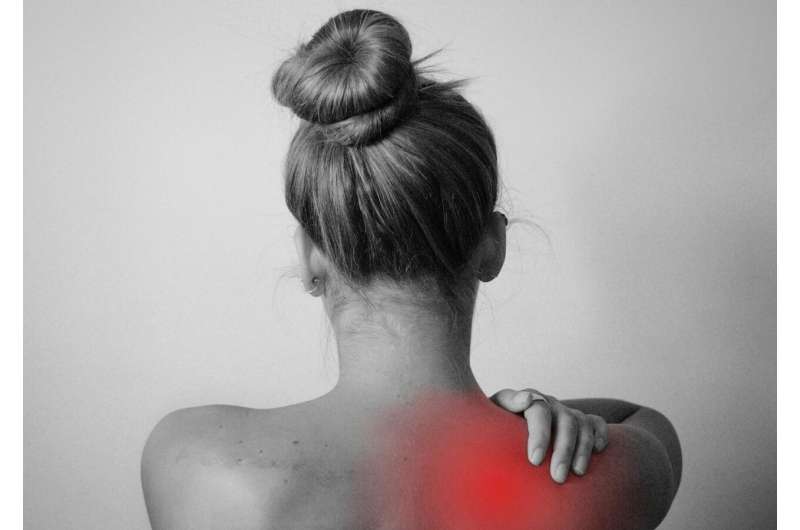This article has been reviewed according to Science X's editorial process and policies. Editors have highlighted the following attributes while ensuring the content's credibility:
fact-checked
trusted source
proofread
Advanced treatments target advanced shoulder issues

Shoulder pain, weakness and range of motion loss can keep you from the activities you need and love to do, whether it's lifting boxes on the job, putting away dishes in the kitchen or hitting that powerful tennis serve.
Wear and tear, injury, certain medical conditions and age can take a toll on how your shoulder functions. Sometimes, the treatment is pretty straightforward, with options ranging from physical therapy to injections or surgery.
But other times, the condition of your shoulder has advanced beyond those options. Now, there are treatments designed especially for more advanced shoulder issues.
Inserting a balloon for stabilization
When a rotator cuff tear is so severe it can't be repaired, your orthopedic surgeon may use a subacromial balloon spacer. This small device is inserted into the space where the damaged rotator cuff lies using minimally invasive arthroscopic surgical techniques. Once in place, the device is inflated with saline to cushion and stabilize the joint.
After six to 12 months, the balloon dissolves. In the meantime, a physical therapist will help you retrain your muscles to move the shoulder using more optimal mechanics. Recovery tends to be faster since the tendons don't need to heal, as they would in traditional rotator cuff surgery. You can return to your daily activities with improved function, range of motion and less pain.
3D printing for reverse shoulder replacement
Reverse shoulder replacement is another surgical method for treating patients with severe arthritis, unrepairable rotator cuff tears or other damage. Basically, your surgeon changes the mechanics of the shoulder to allow other muscles to move it.
Since no shoulder is the same, how closely the replacement implant fits your shoulder's anatomy and how the implant is placed play key roles in the success of a reverse shoulder replacement. Your surgeon is able to choose from metal and plastic implants that are available in a few different shapes and a range of sizes. A 3D-printed model of your shoulder can help your orthopedic surgeon precisely place the implant.
The process begins with a CT scan before surgery to create a 3D model of your shoulder on a computer. This allows your surgeon to see how the implant should be placed, how to preserve as much bone as possible and how to identify the best way to secure the implant. A 3D guide is printed that duplicates the template from the computer.
During surgery, your surgeon places the 3D guide on the bone so the implant can be placed precisely as planned.
3D modeling also helps your surgeon determine if you need a customized implant.
Creating a customized 3D implant
In most cases, your surgeon can choose a standard implant that will give you the shoulder function you need. But for some patients, their anatomy or bone damage won't allow a standard implant to fit appropriately. An implant that doesn't fit well can fail, leading to more surgery.
In these cases, an implant can be created to precisely fit a patient. Using a computer-generated 3D model, the custom implant designed for the patient is printed using the same materials as a standard implant. While this is only being used in special cases, it may become the standard in time.
Wider spectrum of customized treatments
There are new options to provide a wide spectrum of treatments for patients with advanced shoulder issues. Having multiple options allows your orthopedic surgeon to choose the one that targets your specific issues to achieve the best outcome.




















